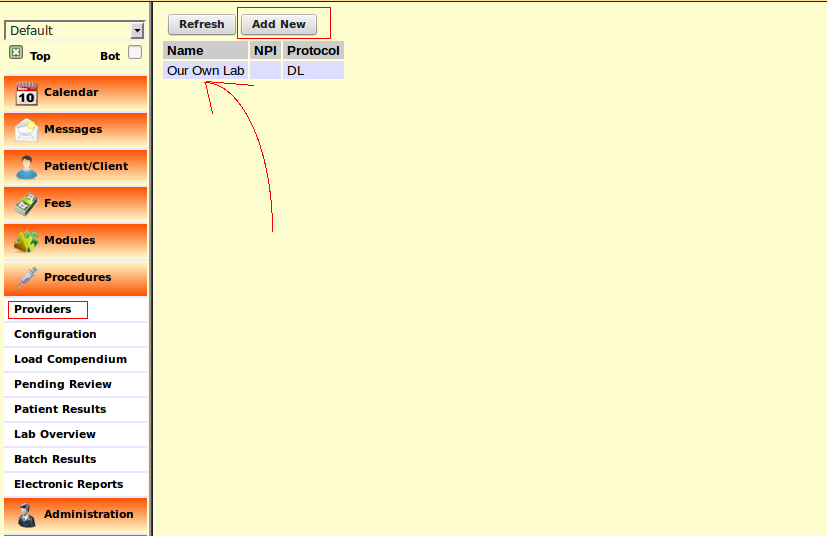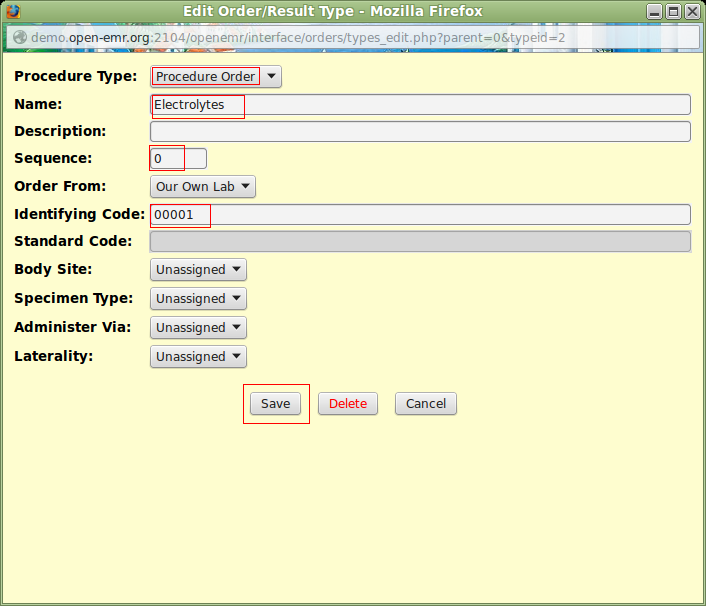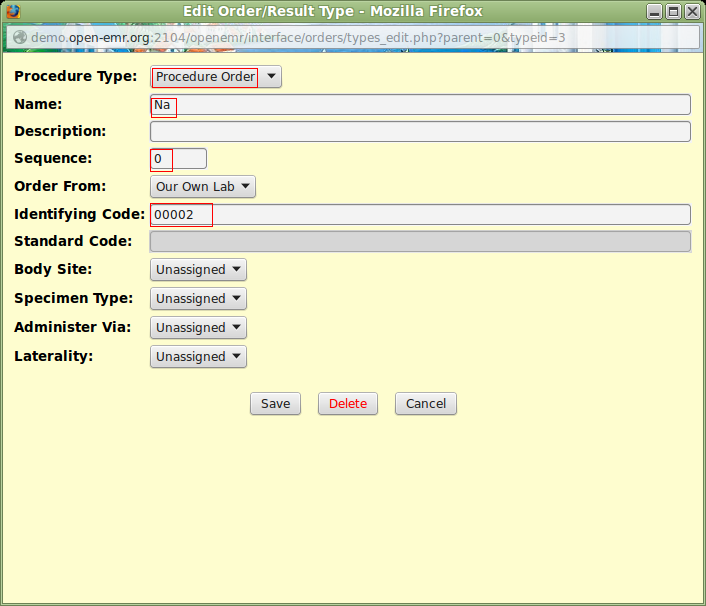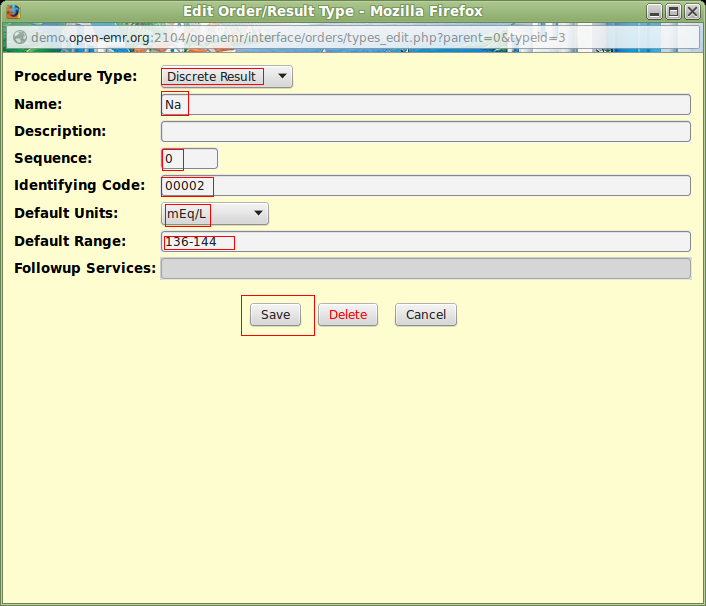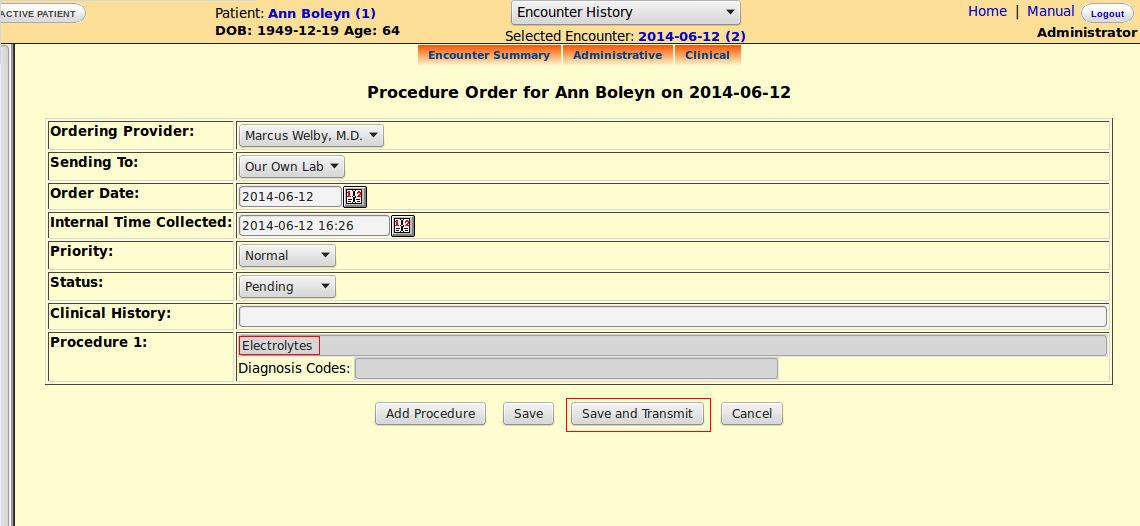Difference between revisions of "Procedures Module Configuration for Manual Result Entry"
| Line 98: | Line 98: | ||
==Pending Review== | ==Pending Review== | ||
To bring up the studies for result entry, login as Physician. Other staff, including Administrator, will not have the ability to perform this task. | To bring up the studies for result entry, login as Physician. Other staff, including Administrator, will not have the ability to perform this task. Generally this privilege should be reserved for the Physician. The Front Desk should not be permitted to sign off on diagnostic studies. In unusual situations wherein the Physician wears two hats and has the responsibility of the Administrator as well, this can be changed in Administration/ACL. | ||
[[File:lab24.png]] | [[File:lab24.png]] | ||
| Line 104: | Line 104: | ||
Add the Reported date, assign a Status and enter the results before clicking the "Sign Results" button. | Add the Reported date, assign a Status and enter the results before clicking the "Sign Results" button. | ||
[[File:lab25.png]] | [[File:lab25.png]] | ||
==Patient Results== | ==Patient Results== | ||
Revision as of 11:47, 14 June 2014
Preface
The goal of this guide is to provide a set of step-by-step instructions for setting up the Procedures Module to enter diagnostic results by hand. Doing so brings this data into the Encounter Form and closer to the clinical note.
Configuration necessitates meticulous attention to detail and order of execution. Once properly configured, deployment is relatively simple by comparison.
It is possible to upload a scanned image of results into Decuments/Medical Record, but that will place the data at a further distance from the clinical note.
To transmit orders and receive results from an external laboratory facility, refer to Laboratory Exchange User Documentation.
Facility
Despite the fact that no orders will be transmitted to an external facility; it is necessary, however, to manufacture a fictitious Lab Service in order to configure this module. The fictional facility must be entered in the Address Book first.
"Our Own Lab" will the Lab Service for the purpose of this exercise.
From the Menu on the left side bar, go to Procedures/Providers and add "Our Own Lab".
Configuration
The module can be set up for a panel of tests or for a single study. A panel will require a 3 tier process while it is only 2 for a single test.
Panel
Click the Configuration link and the "Add Top Level" button to begin. This button must be clicked each time a new panel or new single study is added to the list.
The first tier, or level, of the configuration, will be the naming of the Group. Maintain the Sequence to keep the list in the desired order.
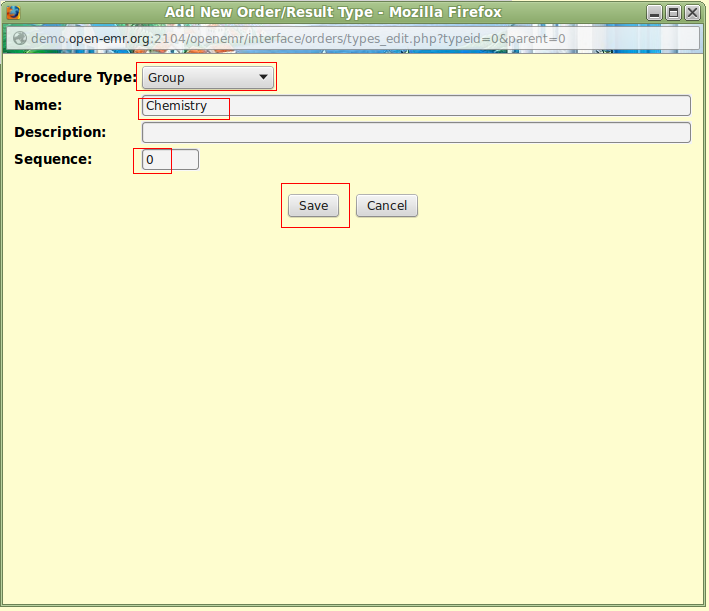
To begin the second tier of configuration, click the "Add" link. It may be necessary to scroll to the far right to see that link in the image below. Use "Edit" to modify configuration. To delete a setting, click "Edit" and go to the desired dialog box to delete the entry.

The second tier involves naming the Group as "Electrolytes" and assigning an Identifying Code to it. The choice of numerals or letters is at the discretion of the practice.
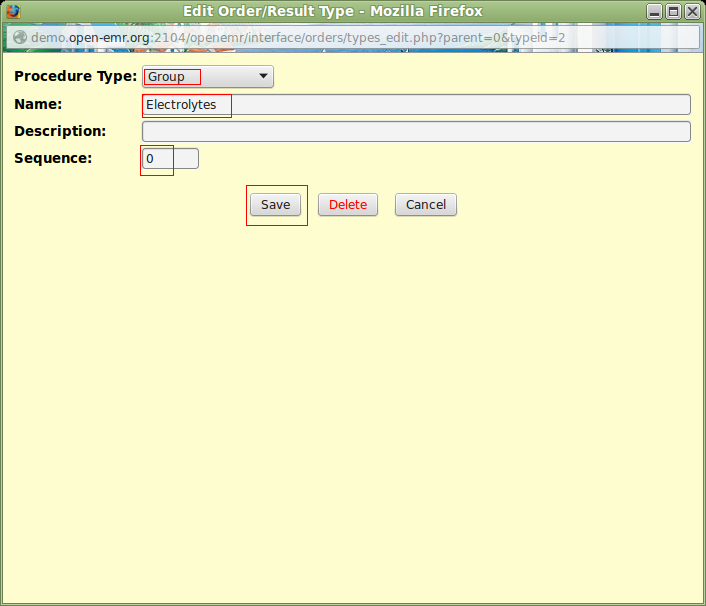
Be certain that there is a "Yes" under the Order column and an Identifying Code as well. If these items are missing, it is a warning that the configuration had been faulty. The entries must be deleted and the process begun anew.
Click the "Add" link associated with "Electrolytes" to begin setting up Sodium. Scroll to the right if the image of the link is not visible.

The third tier will configure the first test of the panel, namely Sodium. Fields left empty are optional.
Because mEq/L was missing; it had to be added in Administation/Lists/Procedure Units. Remember to make the addition Active before saving it.

It is helpful to have the range of values for a particular test in Discrete Result; but Recommendation, a third step of the third level configuration, is optional.
A similar process is used to add the other tests of the panel. Again click the "Add" link associated with "Electrolytes" to begin. Scroll if need be. Pay close attention to Sequence; otherwise the tests will appear in alphabetical order; not Na, K, Cl, CO2 as physicians are accustomed.

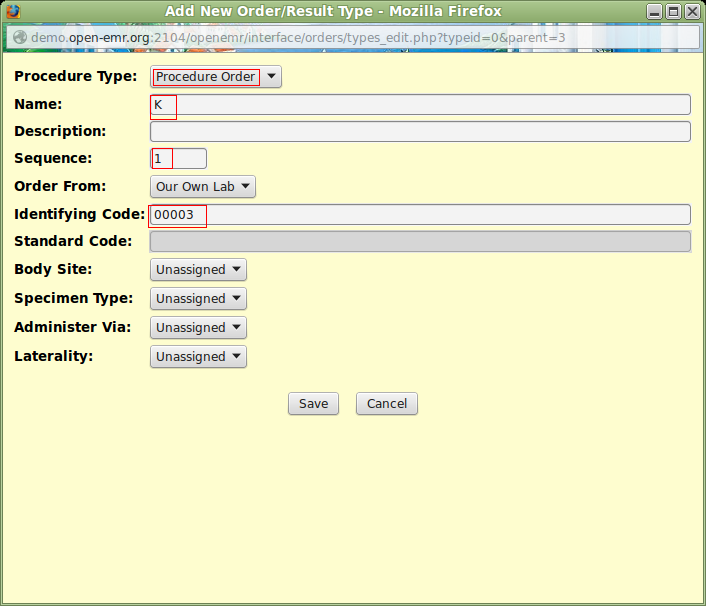
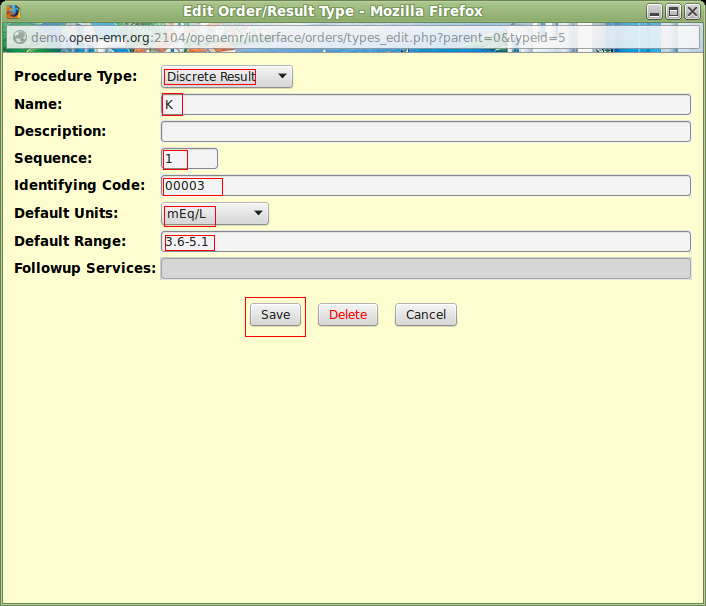
A full panel should look like the following.

Single Study
Click "Add Top Level". A single test requires the naming of the Group and of the test.
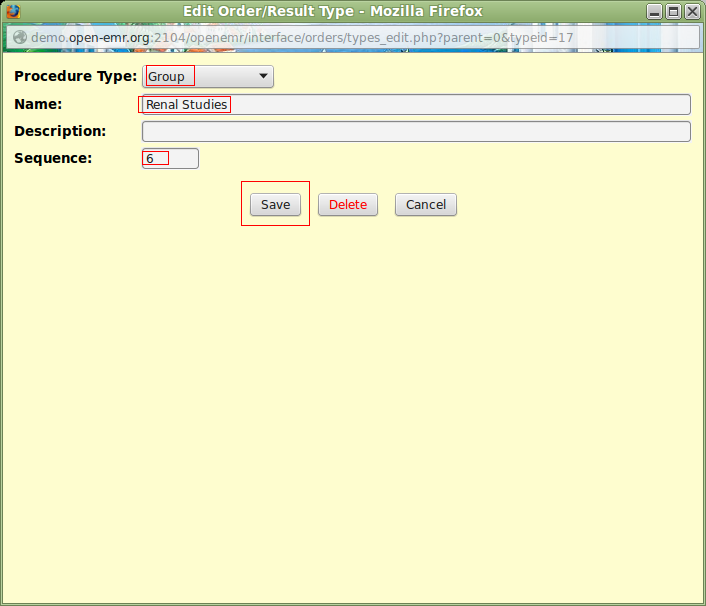
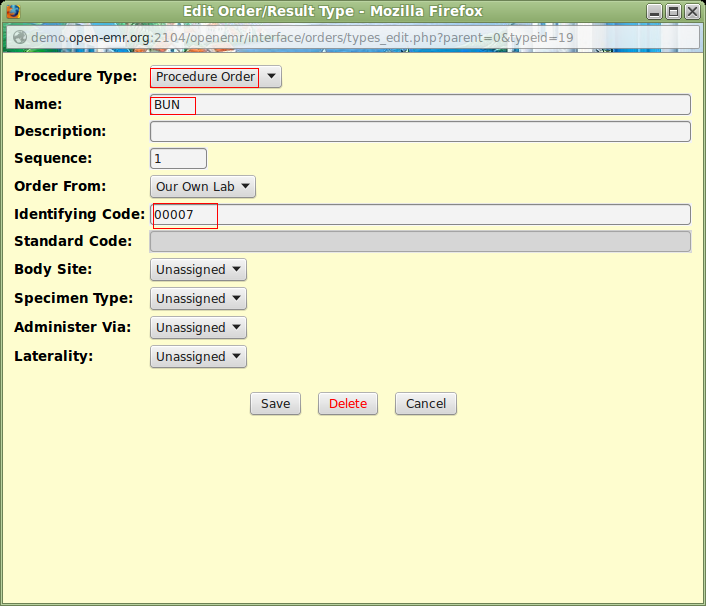
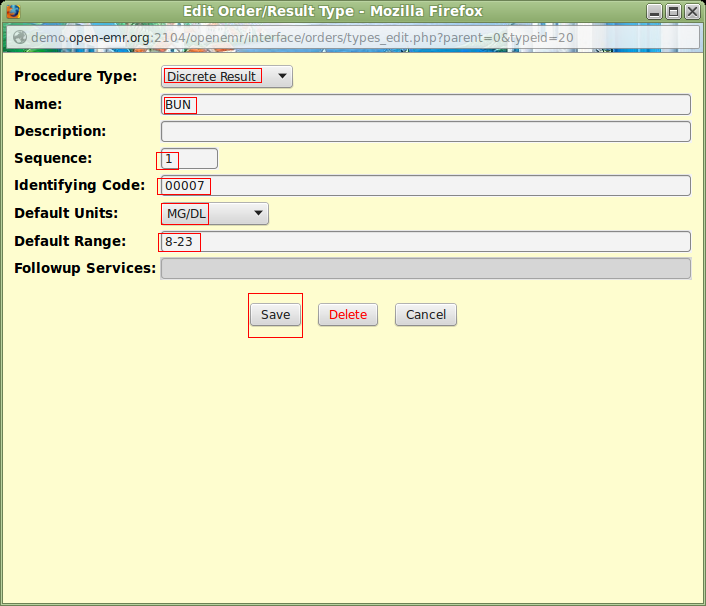
Check that "Yes" and the code are present.

Procedure Order
Create an encounter. From Administrative, choose "Procedure Order".

Click in the designated area to search for the diagnostic study.
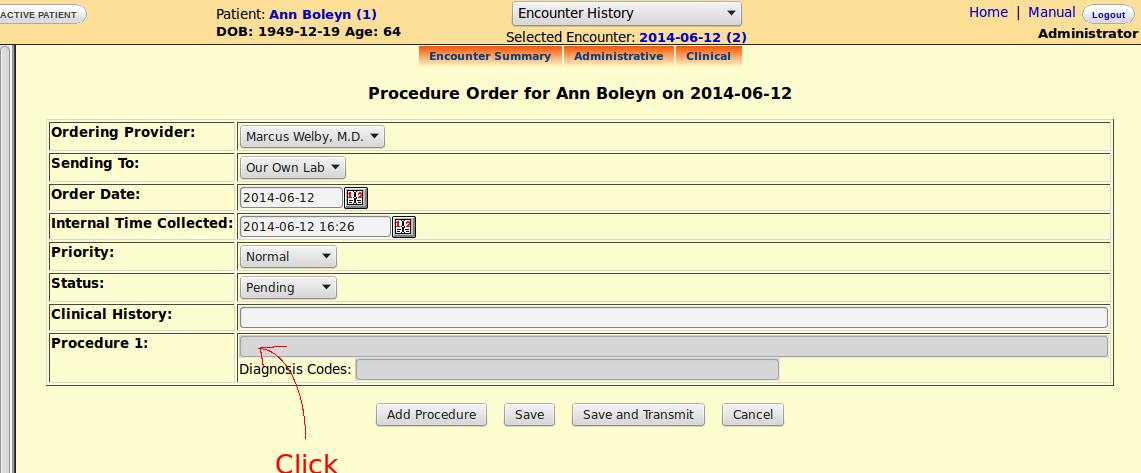
Click the link to select the study.
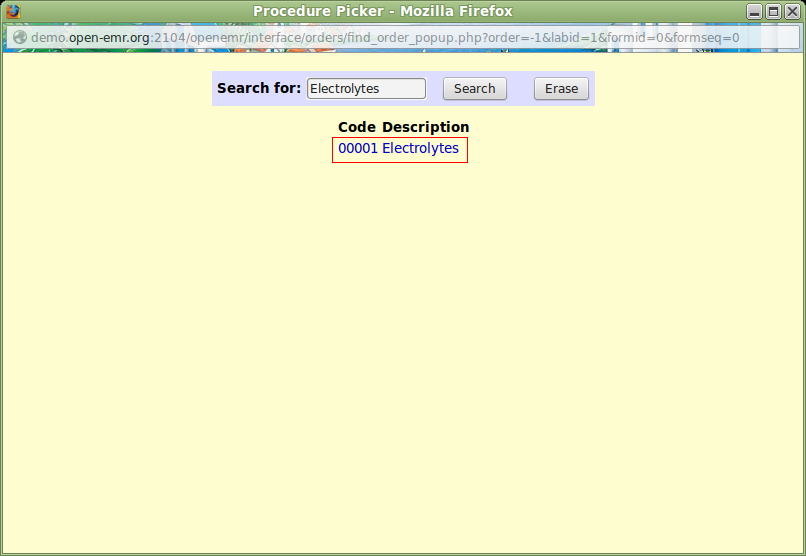
Pending Review
To bring up the studies for result entry, login as Physician. Other staff, including Administrator, will not have the ability to perform this task. Generally this privilege should be reserved for the Physician. The Front Desk should not be permitted to sign off on diagnostic studies. In unusual situations wherein the Physician wears two hats and has the responsibility of the Administrator as well, this can be changed in Administration/ACL.
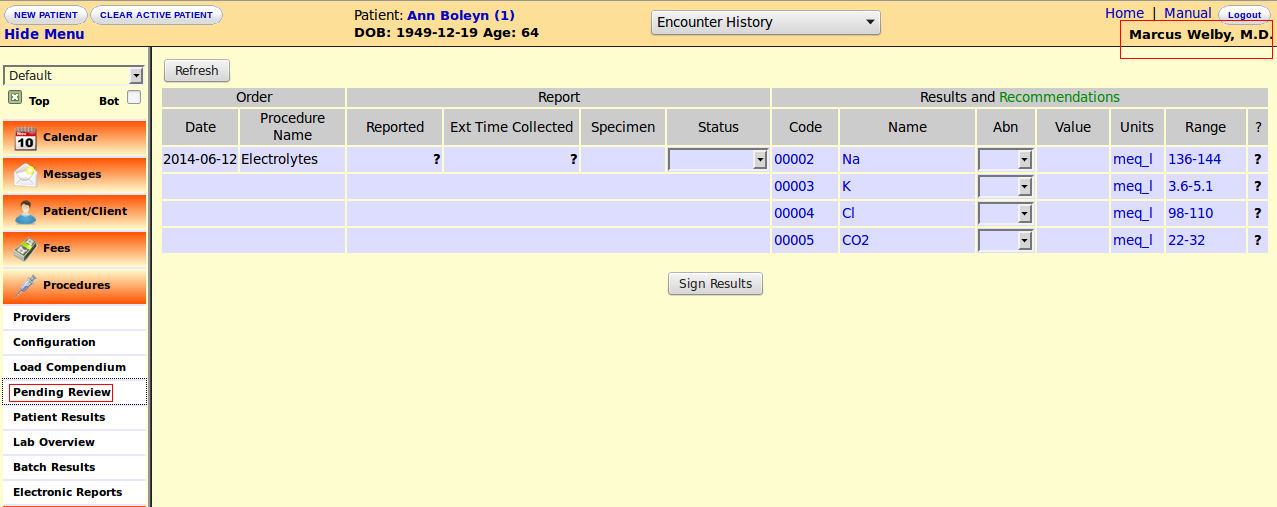
Add the Reported date, assign a Status and enter the results before clicking the "Sign Results" button.

Patient Results
After the signing the results, the data will appear in Patient Results.
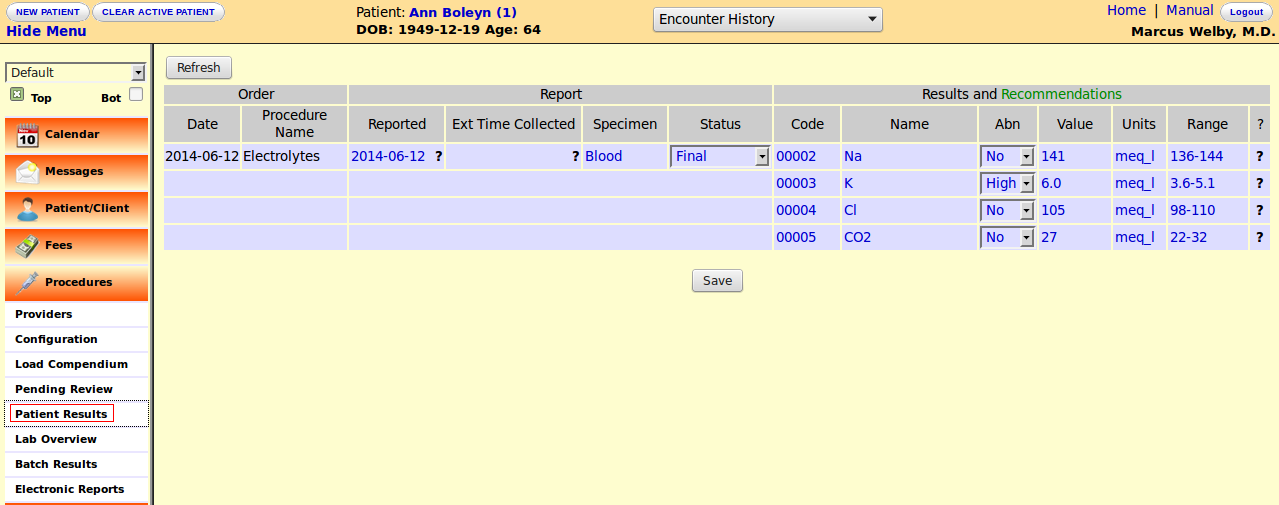
Electronic Reports
This can be used to look up studies for a particular day or period of time. It is an excellent tool to prevent a study from being forgotten. In a busy practice it is not unusal to overlook an ordered study; only to discover later, to the horror of the practice, that in addition to the abnormal result; that the timely processing of that result could have saved the patient from a delay in diagnosis and treatment.
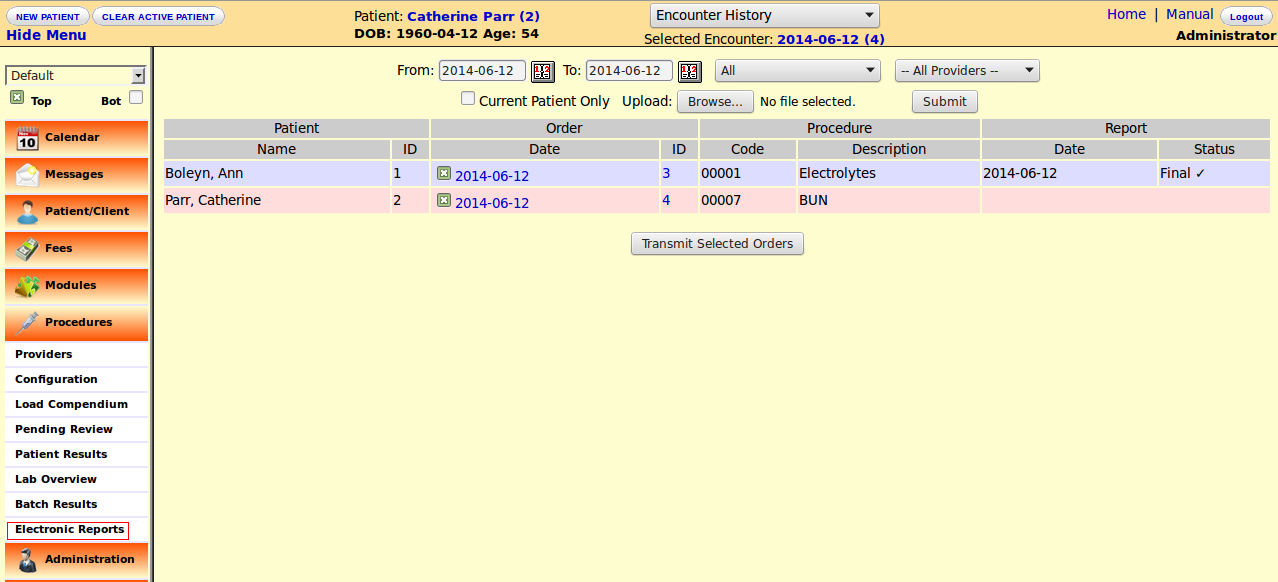
Postscript
Configuration of the Procedures Module is a bit of a workout. Like all other aspects of OpenEMR, the more a physician masters; the greater his confidence and the deeper his appreciation of the magnum opus of the developers of this Project and all other Open Source projects as well.
Always frolick along the way.
